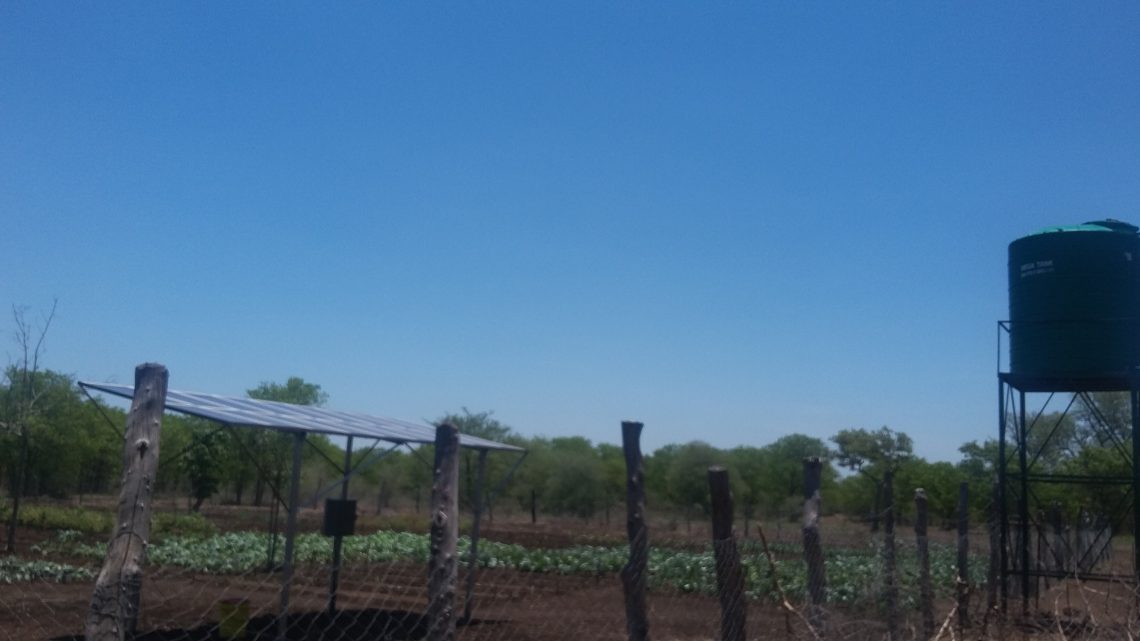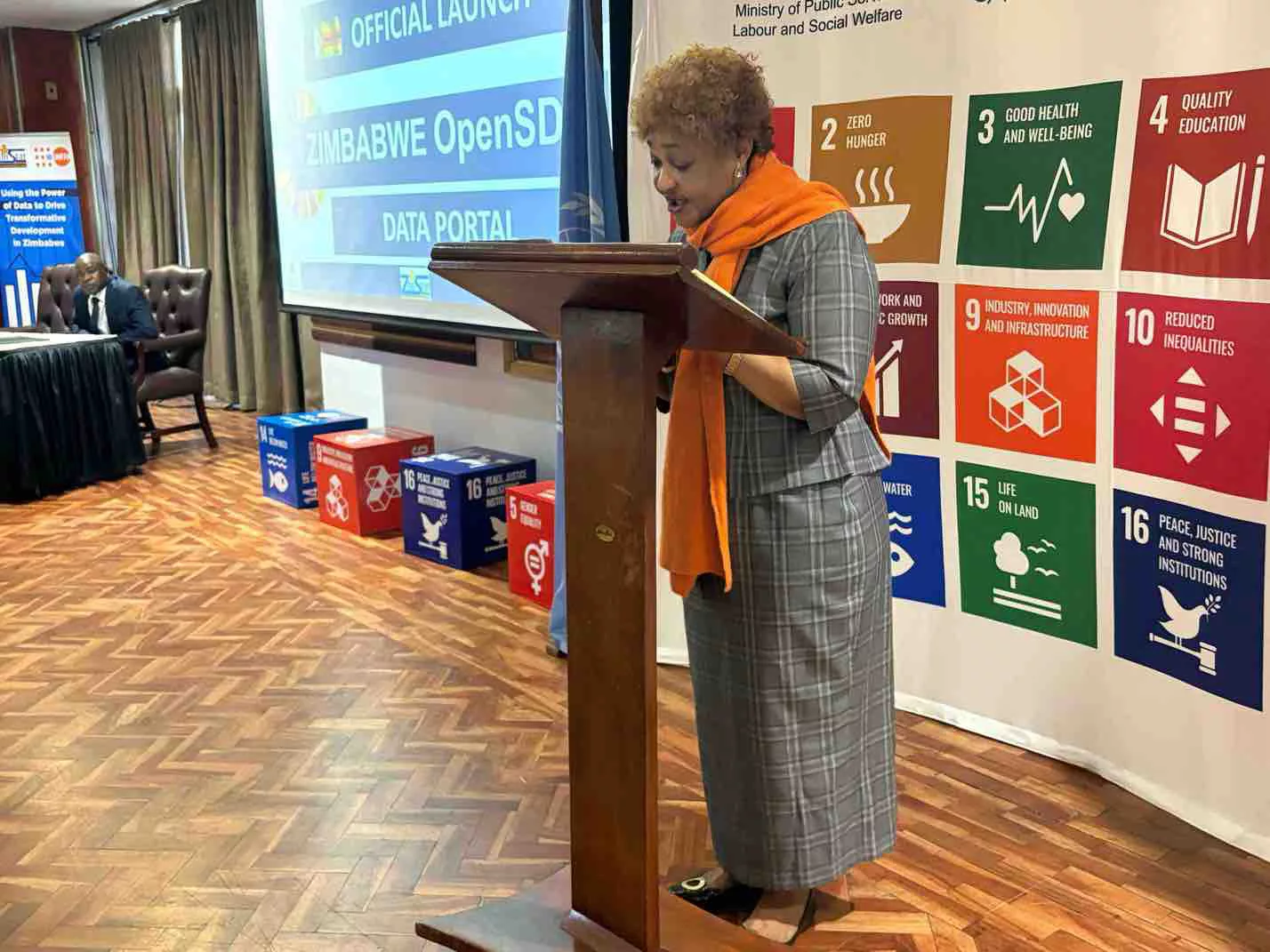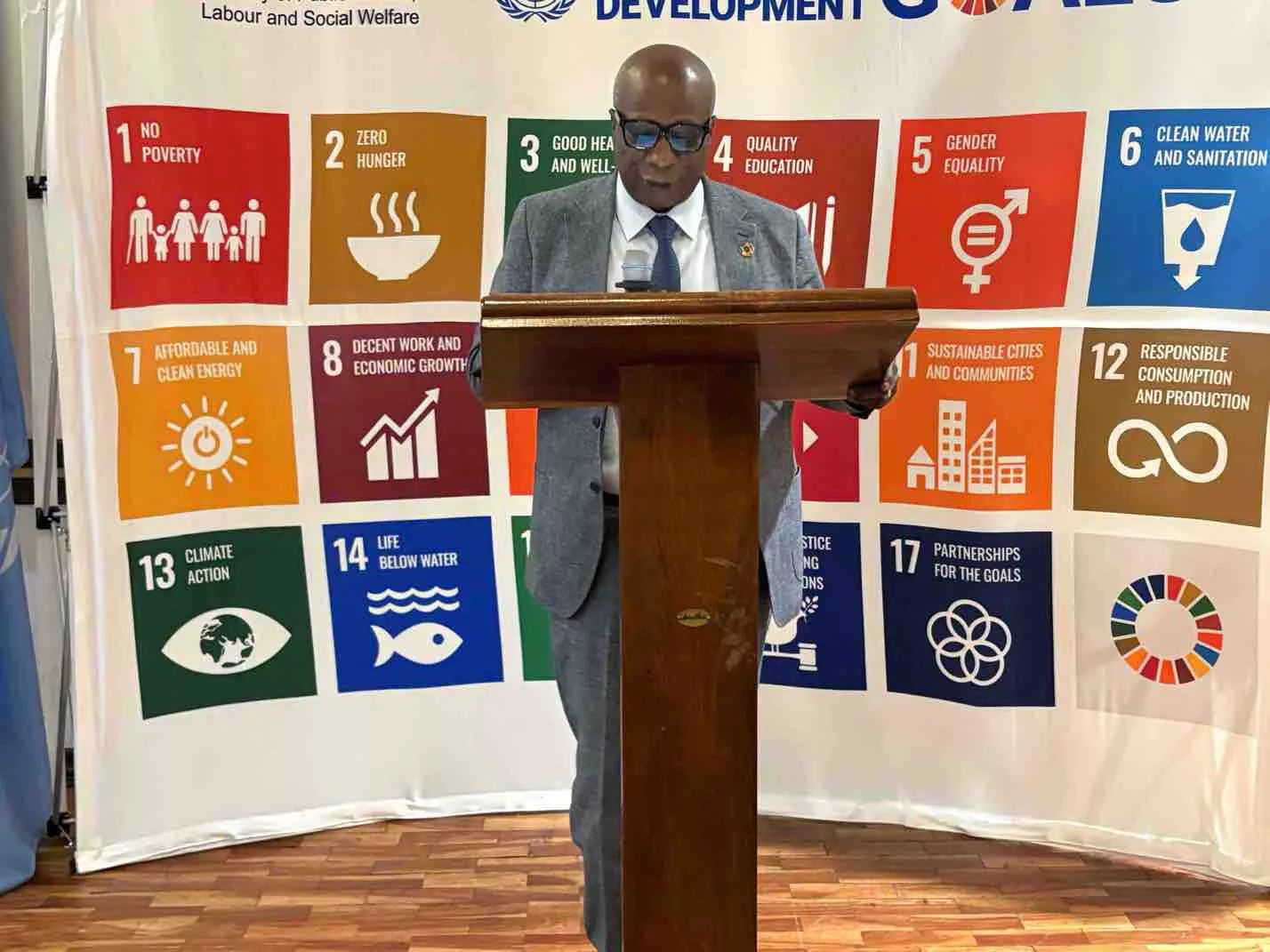By Byron Mutingwende
It is just nine o’clock in the morning but despite the air conditioner, everyone on the Toyota off-road vehicle is sweating profusely. We drive past the fence bordering the Marirangwe Game Park along the Chiredzi-Tanganda Highway in the hot Lowveld area and head straight to Village 3 of the Chizvirizvi area under Ward 22 of Chiredzi District.
The simmering heat makes us feel like we are in the oven or as if the sun is about to drop to mother earth – that is if anything like that ever happens. Village Headman, Risumati Njitumani leads a group of men and women gyrating to health-conscious local songs that speak to the importance of addressing stunting.
The village is part of a group that is benefiting from an intervention by the Food and Nutrition Council (FNC) and its partners, which uses a community based multi-sectoral approach to address food and nutrition insecurity in selected vulnerable districts of Zimbabwe, with a special focus on systems strengthening.
“Preventing and reducing stunting, especially during the first 1000-day period; from conception to 2 years of age has emerged as one of the most critical national priorities to Zimbabwe. This is reflected in the Government’s new economic turnaround blueprint, the Zimbabwe Agenda for Sustainable Socio-Economic Transformation (ZIMASSET)’s cluster number one. In addition to the ZIMASSET, the Government of Zimbabwe has endorsed a multi-sectoral Food and Nutrition Security Policy and Implementation Matrix in 2013-2014, that calls for stakeholders in agriculture, social protection, health, nutrition, education, water and sanitation sectors to address food and nutrition insecurity using a multi-sectoral approach,” said Lloyd Chadzingwa, the FNC Advocacy and Communications Officer in his briefing to journalists and members of the ward food and nutrition committee during the media tour.
Moline Mabihani, a middle-aged woman, explains that the area has witnessed a number of malnutrition-related problems like kwashiorkor among children but the most prevalent problem was stunting.
“Prior to the programme, we were told that according to the local tradition, every child had to be introduced to maize-meal or sorghum-meal porridge mixed with herbs in order to strengthen him or her just a month after birth. We would then introduce our babies just at those early stages to water and other drinks like baobab and sugar mixture. We had no idea that it was important to exclusively breastfeed babies for the first six months after birth. With that knowledge gathered from meetings with health workers from nearby clinics and health centres, stunting is reduced and we thank the FNC and its partners,” Mabihani said.
Stunting has adverse effects on children’s cognitive and behavioural development, through mechanisms that are still not fully understood. Being stunted was also found to be associated with less schooling, which was a partial reason for the poor cognition found. Findings from the Zimbabwe Multi-Indicator Cluster Survey (MICS) 2014 had indicated the prevalence of stunting at 27.6% with noted stunting high in rural areas (30%) compared to (20%) urban areas. The high prevalence of stunting in rural areas necessitated a more targeted approach in the highly vulnerable rural districts of the country.
The communities of Wards 7 and 22 of Chiredzi District comprises people displaced to make way for the Great-Limpopo Trans-frontier Park who were resettled in the arid south-eastern Lowveld.
“The livelihoods of these people were affected by the creation of the trans-frontier park. Effects of climate change also compounded their problems. The food and nutrition security interventions are meant to create resilience within these communities,” said Itai Dhliwayo, the Chiredzi District Information Officer.
Tariro Mativenga, an officer with the department of Agricultural Extension Services of the ministry of agriculture, whop is the Ward 22 Chairperson of the Food and Nutrition Committee hailed the people-centred approach by FNC that places ownership and control of the development process within the community.
“By being allowed to participate in the planning and implementation stages of the projects,we have ceased to be just beneficiaries of projects and programmes but became masters of our own destiny. It enables a greater layering of interventions, fostering complementary measures that build a stronger rationale for synergies across programme areas. This is so because the community based approach establishes a sustainable common planning platform that facilitates local coordination,” Mativenga said.
Elliot Matsilele, the Chairperson of Village 1 on the project of reducing stunting paid tribute to donors like Plan International and the Norwegian Refugee Council for their support in the installation of a solar-powered water pump and fence to the community nutrition garden.
Comprising 20 men and 10 women, the garden is producing a variety of vegetables including cabbages, carrots, okra, onions and tomatoes. The uptake of small grains like sorghum, rapoko and millet is also increasing.
Edward Mahanyela (44), from Village 8 is keeping some fish in a huge pond constructed from resources pooled from his own coffers.
“I was motivated to keep fish after realizing that they multiply immensely. One fish can have up to 500 fish. Besides being a source of high protein content, the fish sell very quickly. I also use readily available material like chicken droppings from my fowl run as well as chuff from sorghum and maize to feed the fish. At the moment, I am teaching other community members how to build fish ponds. From this project, I managed to build a two-bedroomed corrugated house and I am now able to send all my children to school,” Mahanyela said.
According to Esnath Sidhuna, the Nurse-In-Charge of Chizvirizvi Rural Health Centre, stunting is a result of multiple causes. As a result village health workers are educating communities on the importance of HIV testing for pregnant mothers, malaria prevention in the community, water, sanitation and health (WASH) as well as respecting of children and women’s rights.






